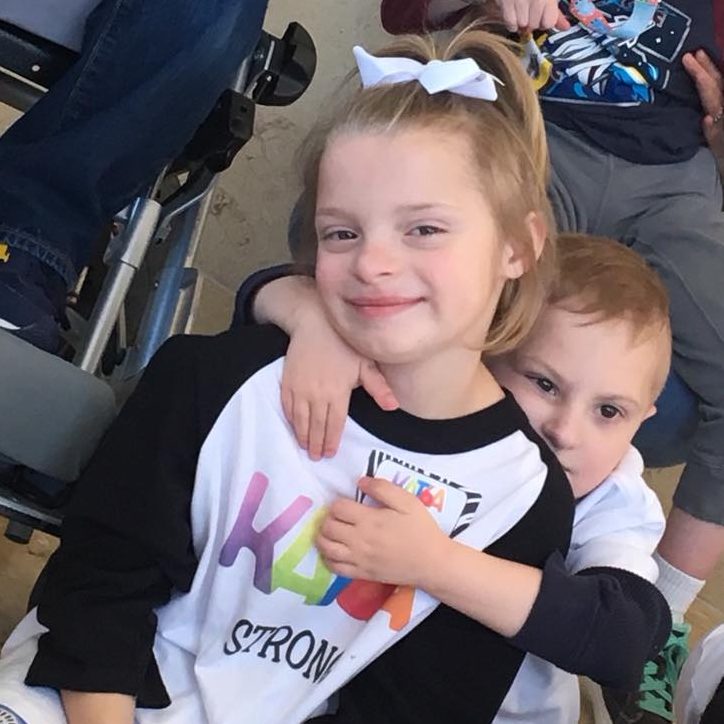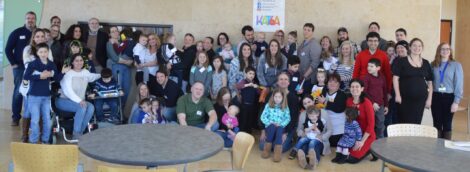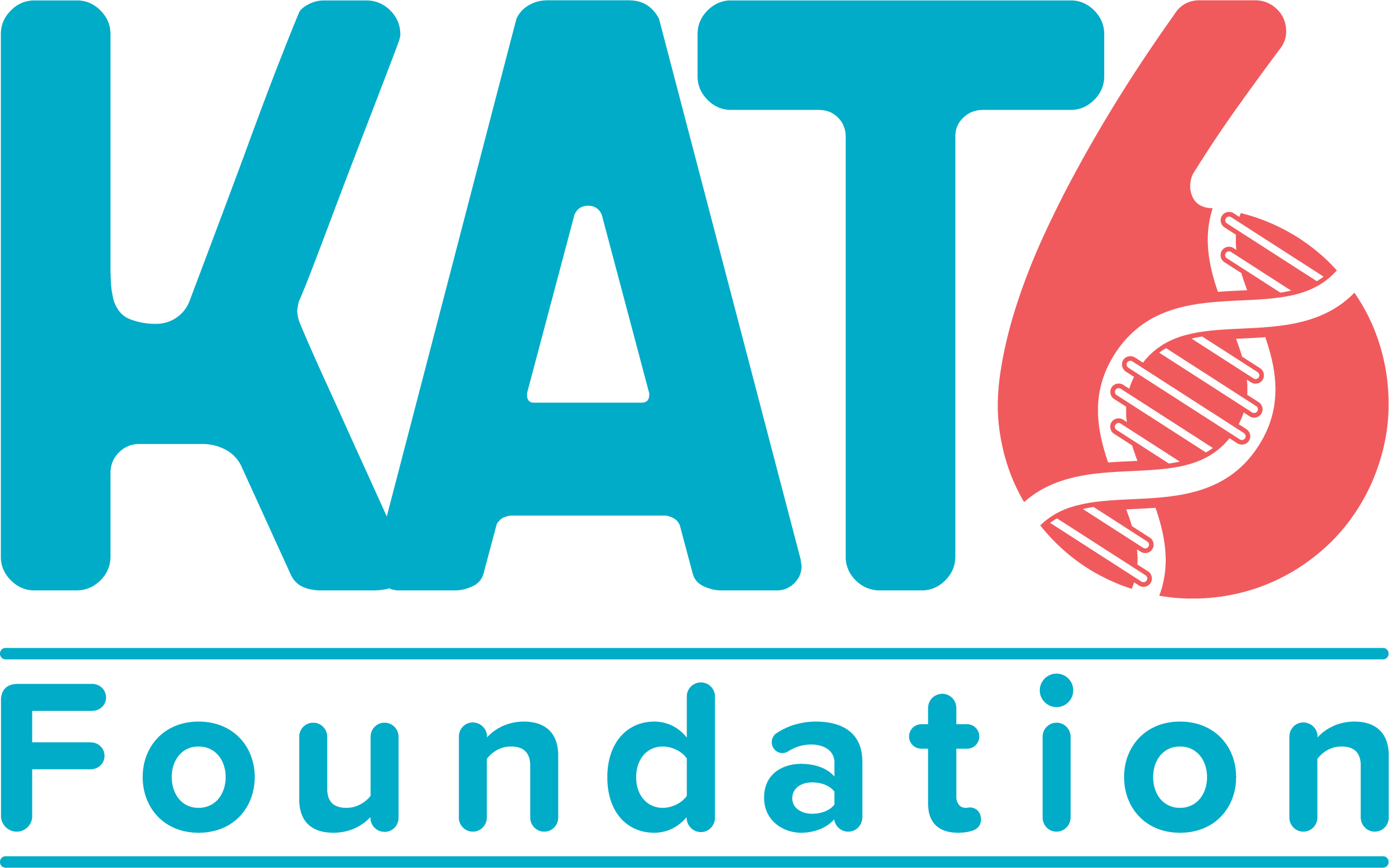
On February 3, 2018, the first KAT6A clinic was held in Baltimore, Maryland, at the Kennedy Krieger Institute. Nineteen families attended and several more followed the clinic by livestream.
We were pleased to have in attendance and as speakers Jacqueline Harris, M.D., Ph.D., Pediatric Neurologist from the Kennedy Krieger Institute in Baltimore, Hans Thomas Bjornsson, M.D., Ph.D., Director of Epigenetic and Chromatin Clinic and Assistant Professor of Pediatrics at Johns Hopkins Hospital in Baltimore, Jill Fahrner, M.D., Ph.D., Assistant Residency Program Director at Johns Hopkins Genetic Medicine Residency Program and Assistant Professor of Pediatrics at Johns Hopkins Hospital in Baltimore, and Richard Kelley, M.D., Ph.D., former Director of Division of Metabolism at Kennedy Krieger Institute in Baltimore and current researcher at the Division of Genetics and Boston Children’s Hospital.
After a welcome by KAT6A Communications Director Brittany Green, Dr. Jacqueline Harris presented an overview of the KAT6A clinical syndrome. She explained that KAT6A is a histone modifier epigenetic disorder. This means that the gene function is changed, not the gene sequence, and it is influenced by the histone machinery. It is most often de novo, which means that the genetic change happens in the child and is not inherited from either parent. She reported that there are only a few documented cases, so not much is known about KAT6A syndrome. Researchers need more cases to study. However, there seem to be some features that are nearly universal and some features that seem to be related. Some of the universal features include hypotonia, feeding problems, congenital heart disease, eye or vision problems, skull abnormalities, distinctive facial features, and global developmental delay. Less common but probably associated features are small birth size, perinatal complications, seizures, specific behavioral features, sleep disturbances, immune system irregularities, dental abnormalities, hand abnormalities, and brain MRI abnormalities. She concluded by stating that current researchers learn most from the patients and their families and by drawing from information from other similar epigenetic syndromes.
Next, Dr. Kelley spoke about mitochondrial dysfunction in KAT6A. KAT6A affects metabolic protein absorption, and children with this disorder often have abnormal levels of certain plasma amino acids. Some that he mentioned were citrate, asparagine, and phenylalanine. Using common lab standards, amino acid levels often seem within normal range but a doctor who specializes in mitochondrial disorders uses a conversion scale to determine whether there is a mitochondrial disorder. Dr. Kelley has been working with several families to analyze plasma amino acid levels and then recommending parts or all of a mitochondrial cocktail that he has developed as treatment. Carnitine has been shown to potentiate chromatin opening, and Vitamin B5 helps the body break down carnitine, so these are often helpful to children with KAT6A. Several parents have documented developmental progress in their children who are taking carnitine and vitamin B5. Dr. Kelley is quite confident that carnitine is very beneficial to individuals with KAT6A.
Dr. Bjornsson was the last speaker and he spoke about mendelian disorders of the epigenetic machinery and therapeutic possibilities. He has been studying a disorder very similar to KAT6A called Kabuki Syndrome. They are both epigenetic disorders of the histone machinery. Dr. Bjornsson is studying a mouse model of Kabuki syndrome and has been able to gain much needed information, including some effects that can be reversed using drugs targeting the epigenetic machinery. He also feels that carnitine is likely a good therapeutic treatment for KAT6A. He would like to be able to build KAT6A related data based on seeing more patients with KAT6A. He summarized by emphasizing how rare KAT6A is and that in order to assist in further research, the KAT6A Foundation needs to participate in research by donating results, samples and joining studies, as well as promote research by raising funds to help any interested lab get preliminary data to attract NIH funding. We can also continue to organize meetings and clinics such as this one and continue to increase awareness about KAT6A in the world.
The meeting concluded with some time for the families to meet, share information, and speak individually with the doctors. For those present as well as those families who were listening to the live feed, this first get-together was stimulating, rejuvenating, and gave us hope for our children’s future.
You can view the full presentations by the medical specialist on our KAT6A Foundation Youtube channel.

